A network topology refers to the way in which nodes in a network are connected to one another. The network structure defines how they communicate. It is the arrangement with which computer systems or network devices are connected to each other. Topologies may define both physical and logical aspect of the network. Both logical and physical topologies could be same or different in a same network.
 Point-to-Point Topology
Point-to-Point Topology
Bus Topology


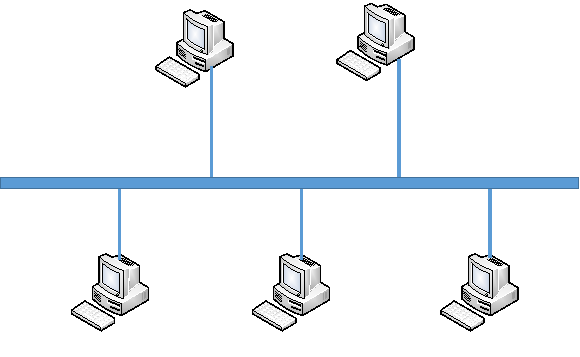
In this topology, all devices share single communication line or cable. This central cable is the backbone of the network and is known as Bus. Every point communicates with the other point through this Bus. This topology may have problem while multiple hosts sending data at the same time. Therefore, Bus topology either uses CSMA/CD technology or recognizes one host as Bus Master to solve the issue. It is one of the simple forms of networking where a failure of a device does not affect the other devices. But failure of the shared communication line can make all other devices stop functioning.
Both ends of the shared channel have line terminator. The data is sent in only one direction and as soon as it reaches the extreme end, the terminator removes the data from the line.
A signal from the source is broadcasted and it travels to all workstations connected to bus cable. Although the message is broadcasted but only the intended recipient, whose MAC address or IP address matches, accepts it. If the MAC /IP address of machine doesn’t match with the intended address, machine discards the signal.
A terminator is added at ends of the central cable, to prevent bouncing of signals. A barrel connector can be used to extend it. Below I have given a basic diagram of a bus topology and then have discussed advantages and disadvantages of Bus Network Topology
|
Advantages |
Disadvantages |
|
It is easy to set-up and extend bus network. |
If the main cable (Bus) encounters some problem, whole network breaks down. |
|
Cable length required for this topology is the least compared to other networks. |
Proper termination is required to dump signals. Use of terminators is must. |
|
Bus topology costs very less. |
It is not suitable for networks with heavy traffic. |
|
Linear Bus network is mostly used in small networks. Good for LAN. |
Security is very low because all the computers receive the sent signal from the source. |
Table 1
Star Topology
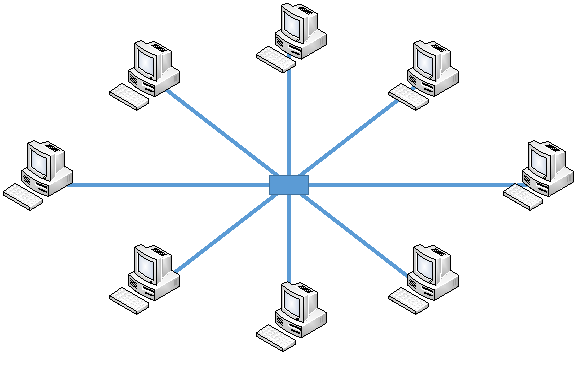
Ring Topology
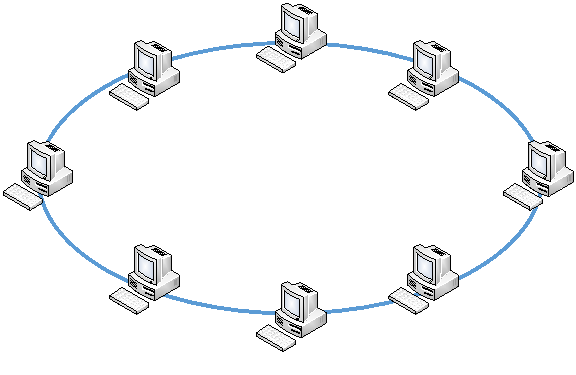
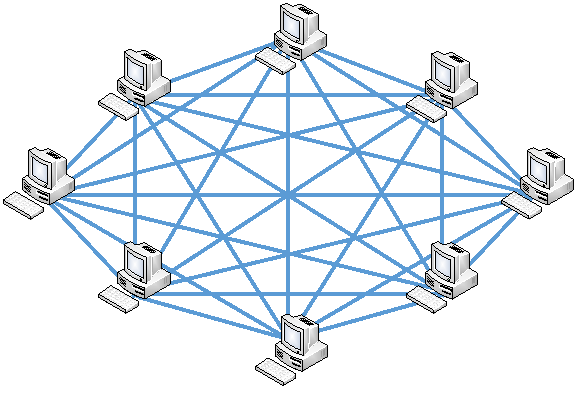 Mesh Topology
Mesh Topology
Tree Topology
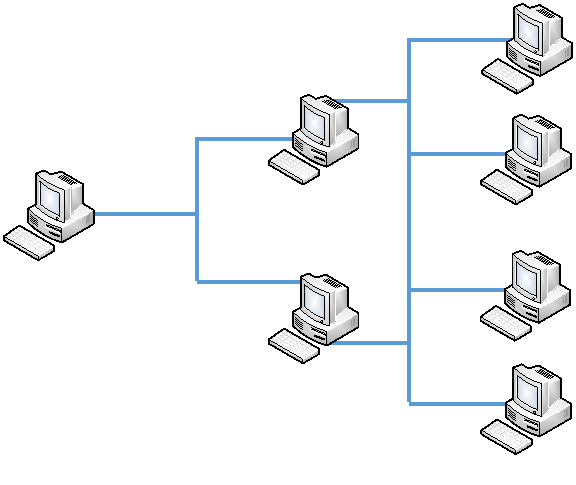
Hybrid Topology
IP Addressing
An Internet Protocol address (IP address) is a numerical label assigned to each device (e.g., computer, printer) participating in a computer network that uses the Internet Protocol for communication. An IP address serves two principal functions: host or network interface identification and location addressing. Two versions of IP technology exist today. Traditional home computer networks use IP version 4 (IPv4), but some other networks, particularly those at educational and research institutions, have adopted the next generation IP version 6 (IPv6).
Internet Protocol Version 4 (IPv4)
IPv4 is the fourth version in the development of the Internet Protocol (IP) and the first version of the protocol to be widely deployed. IPv4 is described in IETF publication RFC 791 (September 1981), replacing an earlier definition (RFC 760, January 1980).





IPv4 Classes
|
Class |
IP Start Range |
Purpose |
|
A |
0 – 127 |
|
|
B |
128 – 191 |
|
|
C |
192 – 223 |
|
|
D |
224 – 239 |
Multicast |
|
E |
240 – 255 |
Research |
Table 2
Class A

Class B

 Class C
Class C
Internet Protocol Version 6 (IPv6)
IPv4 vs IPv6 Comparison
|
Feature |
IPv4 |
IPv6 |
|
Deployed |
1981 |
1999 |
|
Size |
32 bits (4 Bytes) |
128 bits (16 Bytes) |
|
Unit Allocation |
8 bits X 4 |
16 bits X 8 |
|
No of IPs |
232 = |
2128 = 3.4 X 1038 |
|
Unicasting |
Yes |
Yes |
|
Multicasting |
Yes |
Yes |
|
Broadcasting |
Yes |
No |
|
Any casting |
No |
Yes |
|
Address Format |
Dotted Decimal Notation (192.168.1.1) |
Hexadecimal Notation (3FFE:F200:0234:AB00::) |
Table 3 : IPv4 vs IPv6
Network Models
Network models define a set of network layers and how they interact. There are several different network models depending on what organization or company started them. The most important two are:
- ISO OSI Model
The International Standards Organization (ISO) has defined a standard called the Open Systems Interconnection (OSI) reference model. This is a seven-layer architecture listed in the next section.
- TCP/IP Model
This model is sometimes called the DOD model since it was designed for the department of defense It is also called the internet model because TCP/IP is the protocol used on the internet.
ISO OSI Model
|
Layer No |
Layer Name |
PDU |
Description |
|
7 |
Application |
||
|
6 |
Presentation |
||
|
5 |
Session |
||
|
4 |
Transport |
||
|
3 |
Network |
||
|
2 |
Data-link |
||
|
1 |
Physical |
VLANS
Ethernet
Network Standards
|
No |
Tasks |
Week 1 |
Week 2 |
Week3 |
Week4 |
|
1 |
|||||
|
2 |
|||||
|
3 |
|||||
|
4 |
|||||
|
5 |
|||||
|
6 |
- TutorialsPoint, 2017, DCN – Computer Network Topologies. [Online]. Available at <https://www.tutorialspoint.com/data_communication_computer_network/computer_network_topologies.htm> [Accessed on 18th February 2017]
Cite This Work
To export a reference to this article please select a referencing style below:


